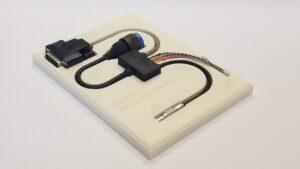Read about the tools and strategies manufacturers can use to meet high quality standards in constantly changing assembly environments.
Assuring quality in a low volume, high mix manufacturing environment presents some unique challenges. Often, the manufacturing process is no sooner set up then it must be disassembled to begin building an entirely different assembly; assemblers just reach a comfort level with the flow of an assembly when they must switch to manufacturing the next one. Likewise, tools and fixtures that are set up for an assembly frequently need to be changed out or re-set up for a new assembly after building a very limited quantity.
Surprisingly, Six Sigma, a methodology that measures defects against millions of opportunities, provides a framework for addressing these low volume, high mix challenges. The DMAIC, or Define, Measure, Analyze, Improve, Control elements of Six Sigma are a good place to start when discussing quality assurance at an Electronic Manufacturing Services (EMS) company like Liberty Electronics:
Define – It’s vital to have a defined plan for each assembly. Liberty, for example, has a plan template that is modified as necessary for each assembly. The plan typically addresses things like the right technology to deploy, validation steps and resources, training, controls and measurements.
Measure – The old adage that you can’t manage what you don’t measure applies here. At Liberty Electronics for example, crimping is a key process that is measured. Tracking process capability is a powerful tool. At Liberty, we track defects per million opportunities (DPMO).
Analyze – Useful data is a gold mine of information for correcting and preventing defects. In God we trust; all others bring data. Gage R&R is an example of an effective analysis tool at Liberty Electronics.
Improve – At Liberty, we believe that if we are not improving, we are going backwards. We deploy powerful tools like Pareto analysis, fishbone diagrams, flow charts, scatter plots, FMEA, etc. to facilitate improvement throughout the value stream.
Control – Poka Yoke or mistake proofing is at the heart of what we do at Liberty to produce defect-free assemblies in a low volume, high mix environment. 3D printing has revolutionized our ability to quickly and inexpensively create assembly and test jigs, fixtures, go/no-go gauges, etc. Training and cross training of employees also must be a top priority. None of this matters, however, if the configuration isn’t correct. Configuration control in terms of document management, items, bills of material, software, etc. is a must. And in low volume, high mix production it must be a lean and nimble system that can get the job done in a timely and efficient way.


If you would like to learn more about Six Sigma quality assurance at Liberty Electronics, contact George Allman at gallman@libertyelectronics.com.





